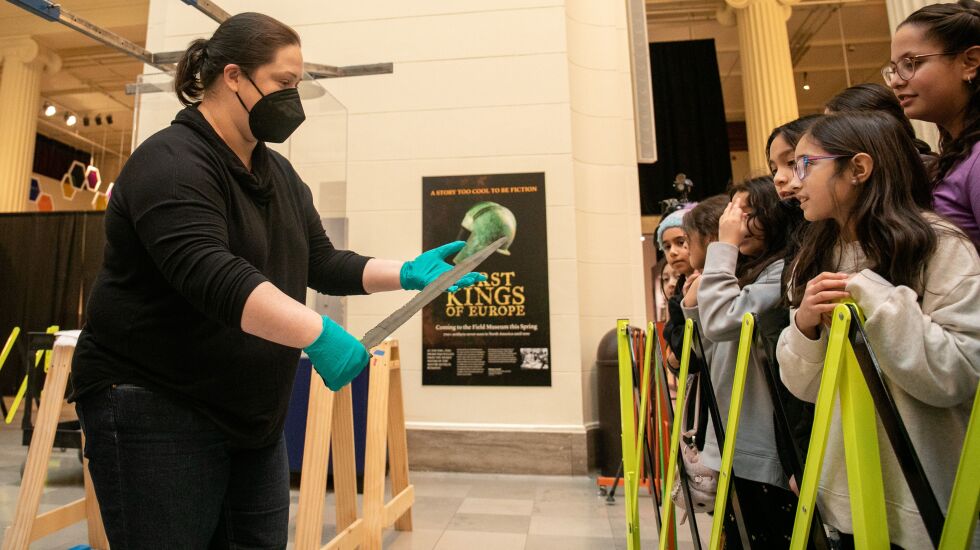
The story typically goes something like this: A priceless object on display for decades at the museum has now been revealed to be a fake.
In the case of a 3-foot-long weapon in storage at the Field Museum since the 1920s, what was believed to be a replica has turned out to be a 3,000-year-old bronze sword.
“I think there was a clerical error when it got here. Someone just wrote it down wrong,” William Parkinson, curator of anthropology at the Field, said Tuesday.
The bronze sword was found at the bottom of the Danube River in about 1920.
Tossing swords — and body armor — into rivers was part of a Bronze Age tradition in the present-day Balkans and surrounding areas.
“Sometimes they seem to commemorate a treaty — literally, sometimes they are burying the hatchet: You’ll get a deposit of hatchets that are brand new,” Parkinson said.

Parkinson was on hand in the museum’s main hall to offer a teasing view of the Field’s upcoming exhibit, “First Kings of Europe,” which will transport visitors back 5,000 years.
“Explore the rise to power of ancient Europe’s first kings and queens and discover how once egalitarian farming communities developed power, inequity, and hierarchy for the first time,” according to the exhibition’s promotional materials.
The Field bought the remarkably well-preserved sword from the Hungarian National Museum soon after it was plucked from the Danube, Parkinson said.
Parkinson said a friend visiting Chicago from the Hungarian museum last summer identified the clerical error with the sword. Testing confirmed the mistake, Parkinson said.
“At the very beginning of the Bronze Age, they already know how to smelt copper. Already extracting copper from ore. Then they start mixing it with tin, which is the big game changer,” Parkinson said of the additive that made the metal much stronger.

At some point toward the end of the Bronze Age — which ran from about 3,000 B.C. to 800 B.C. — bronze swords likely clashed with the new-fangled iron ones, Parkinson said. But the moment wasn’t recorded for later generations.
And somewhere, too, European farmers saw horses for the first time, which arrived from southern Russia. That’s something visitors will hear about in the exhibition, which opens on March 31.
“That happened sometime about 5,000 years ago. We don’t know exactly when … but there was a moment when there were villagers working their farms and some guys come up on horseback. Can you imagine how mind-blowingly world changing that is?” Parkinson said.
“That same kind of thing must have happened during the Bronze Age, where you’re a warrior and you go up against someone with an iron sword. That’s a game changer. That’s a moment we can’t see, but that must have happened.”







